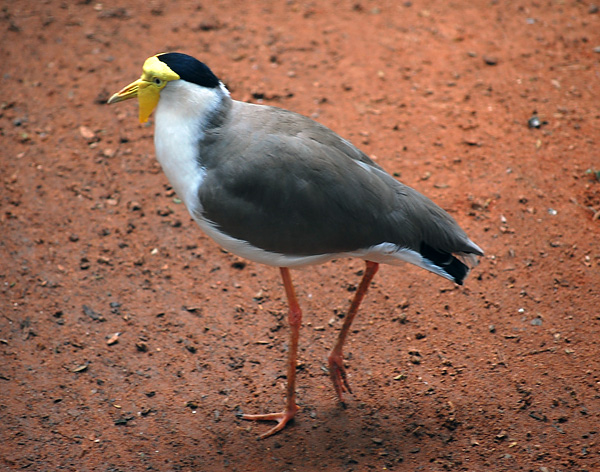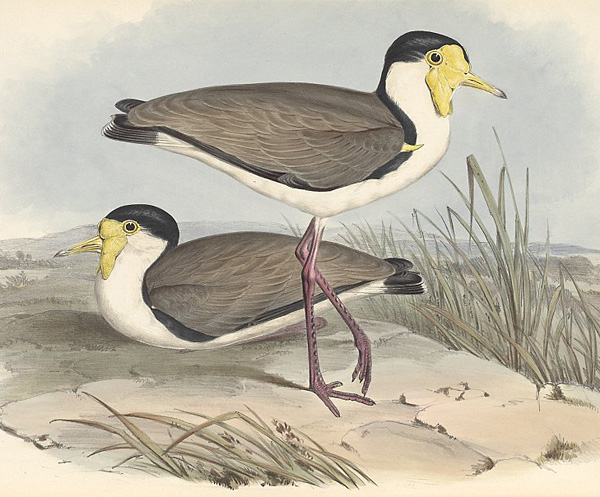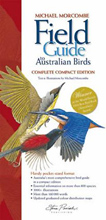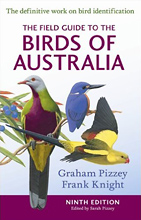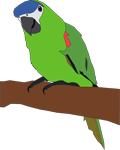
|
|
Masked Lapwing (Spurwing Plover)Vanellus milesFamily: Charadriidae (Lapwings, Plovers, Dotterels, 7 species in Australia) There are two races of the Masked Lapwing, the race found in the Southeast of Australia is called "Race novaehollandiae" and is also known as the "Spurwing Plover", which is shown in the picture below. Most people know this bird as the Spurwing Plover, or just the Plover. This race has smaller wattle than the northern race. (The wattle is the yellow coloured flap of skin that hangs down from the side of the bird's head.) The Masked Lapwing (Spurwing Plover) has a call that sounds like an alarm clock going off. They have spurs on the underside of their wings and can attack if disturbed, with a great amount of agression. They nest in open spaces (and generally like open spaces). When I lived in the house that was part of a plant nursery, our kitchen looked over a large area of shade cloth. There was a small hollow in part of the shade cloth and a pair of Spurwing Plovers (as we called them) nested there every year. We got used to them and they got used to us, although they made their loud alarm-clock call at me if I got too close to them or to the chicks, I was never attacked. Therefore I never felt concerned about approaching them in the way that most people who knew their reputation were concerned. As it turned out, this was a completely false sense of security. There was a pair of plovers that I often saw at Macquarie Uni and once time when they had chicks, I ignored all their loud protests and walked right up to them. After I did this, one of them decided to attack me while the other stayed with the chicks. The attacking bird flew a long distance away (about 100-200 metres), and then flew really, really fast right at my head. I held up my uni bag in front of me to protect me, as if I was going to hit the bird with it. The bird swerved off just before hitting me, then lined itself up for another approach. It came at me at least 10 times before I had walked far enough away for it to stop. A magpie will always attack from behind, and never if you are looking right at it, but the Spurwing Plover showed no fear. Ever since then I have been a lot more careful around them, especially if they have chicks.
Some Birdwatching Resources
See Also
Return to Australian Birds Share This Pageaustralia bird birds field plover spurwing Content is copyright © Survive.au 2005-2025 All Rights Reserved. Terms of Use. Definitely read the disclaimer before trying anything from this website, especially including the practices and skills. This website uses affiliate links – this doesn't cost you any more, but I get a commission on purchases made through the website. As an Amazon Associate I earn similarly from qualifying purchases. |
|
